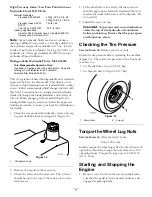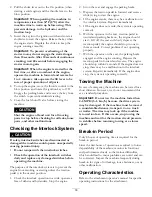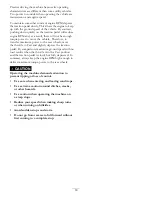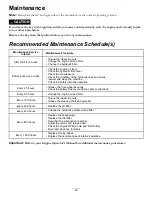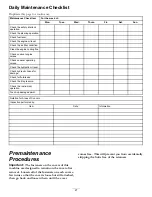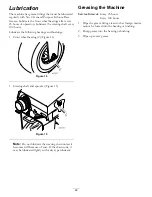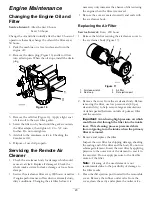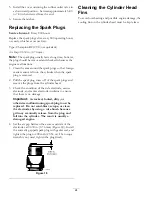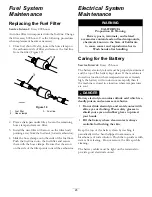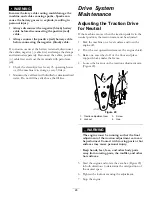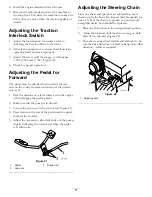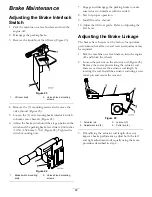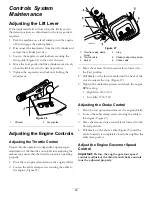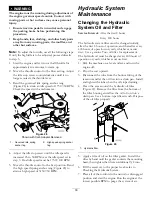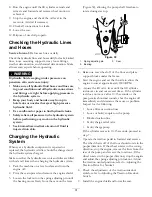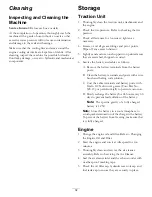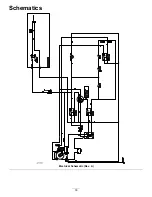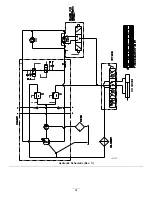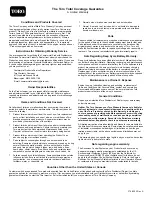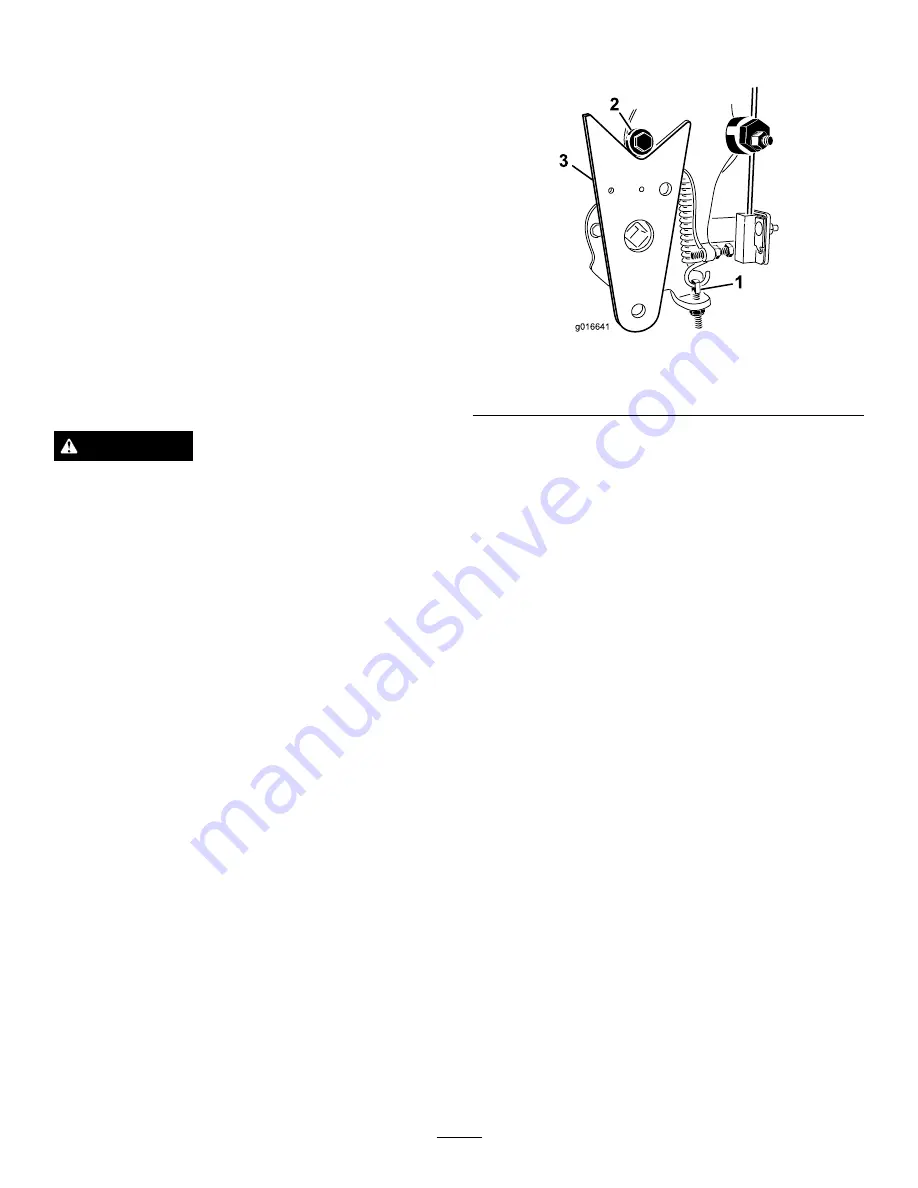
8. Run the engine until the lift cylinder extends and
retracts and forward and reverse wheel motion is
achieved.
9. Stop the engine and check the oil level in the
reservoir. Add oil if necessary
10. Check all connections for leaks.
11. Lower the seat.
12. Dispose of used oil properly.
Checking the Hydraulic Lines
and Hoses
Service Interval:
Before each use or daily
Check the hydraulic lines and hoses daily for leaks, kinked
lines, loose mounting supports, wear, loose fittings,
weather deterioration, and chemical deterioration. Make
all necessary repairs before operating.
WARNING
Hydraulic fluid escaping under pressure can
penetrate skin and cause injury.
•
Make sure all hydraulic fluid hoses and lines are
in good condition and all hydraulic connections
and fittings are tight before applying pressure to
the hydraulic system.
•
Keep your body and hands away from pin
hole leaks or nozzles that eject high pressure
hydraulic fluid.
•
Use cardboard or paper to find hydraulic leaks.
•
Safely relieve all pressure in the hydraulic system
before performing any work on the hydraulic
system.
•
Seek immediate medical attention if fluid is
injected into skin.
Charging the Hydraulic
System
Whenever a hydraulic component is repaired or
replaced, the hydraulic oil filter should be changed and
the hydraulic system charged.
Make sure that the hydraulic reservoir and filter are filled
with oil at all times when charging the hydraulic system.
1. Park the machine on a level surface and turn the
engine off.
2. Pivot the seat upward and remove the engine shield.
3. Loosen the locknut on the spring adjusting pin until
the bearing moves freely from the cam on the lever
(Figure 30), allowing the pump shaft freedom to
rotate during start-up.
Figure 30
1.
Spring adjusting pin
3.
Cam
2.
Bearing
4. Raise one rear wheel off of the floor and place
support blocks under the frame.
5. Start the engine and set the throttle to allow the
engine to run at approximately 1800 RPM.
6. Actuate the lift valve lever until the lift cylinder
rod moves in and out several times. If the cylinder
rod does not move after 10-15 seconds or the
pump emits abnormal sounds, shut the engine off
immediately and determine the cause or problem.
Inspect for the following:
•
Loose filter or suction lines
•
Loose or faulty coupler on the pump
•
Blocked suction line
•
Faulty charge relief valve
•
Faulty charge pump
If the cylinder moves in 10-15 seconds, proceed to
step 7.
7. Operate the traction pedal in forward and reverse.
The wheel that is off of the floor should rotate in the
proper direction. If the wheel rotates in the wrong
direction, stop the engine, remove the lines from the
rear of the pump and reverse the locations. If the
wheel rotates in the proper direction, stop the engine
and adjust the spring adjusting pin locknut. Adjust
the traction neutral position; refer to Adjusting the
Traction Drive for Neutral.
8. Check the adjustment of the traction interlock
switch; refer to Adjusting the Traction Interlock
Switch.
9. Install the engine shield and lower the seat.
31
Summary of Contents for Sand Pro 2020
Page 33: ...Schematics Electrical Schematic Rev A 33 ...
Page 34: ...Hydraulic Schematic Rev C 34 ...
Page 35: ...Notes 35 ...

